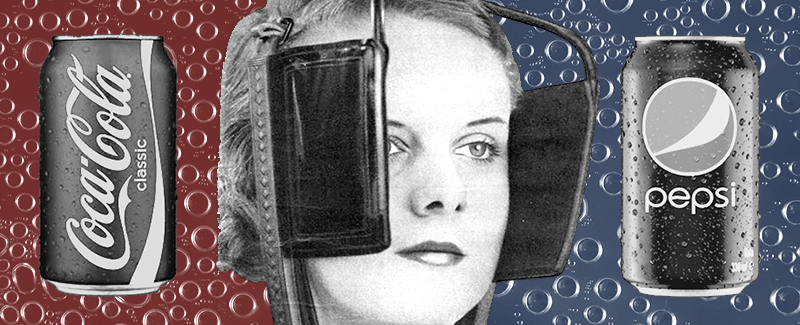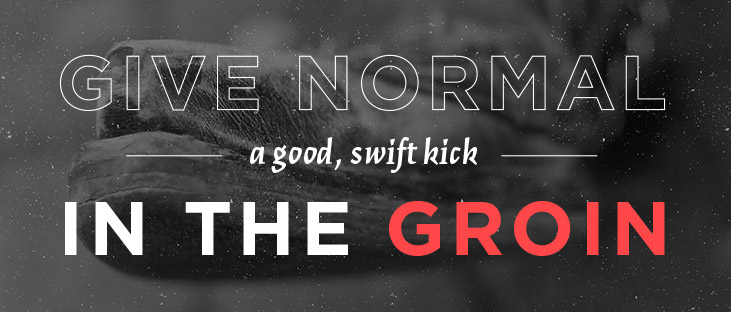 Branding
Branding
Love is Blind: Building Brand Loyalty
After filling up my second cup of coffee, I ask the group to take their seats. The smell of freshly roasted coffee and danishes fill the room as 10 of us crowd around the conference room table and get ready for a day-long branding workshop. There’s always one slightly indignant participant with their arms folded as we begin the day — obviously skeptical about this branding hokus-pokus we’re about to dig into. That’s because branding is often seen as snake oil or a smoke and mirrors — but there is real, quantifiable power running through the veins of branding that causes customers to fall in love with brands. And we can prove it.
Early on in the workshop, we do an experiment, and I will ask for a volunteer who is a brand loyalist. For this exercise, the loyalist has to be either a Coke or Pepsi fan (it’s especially fun if it’s the guy with the folded arms!). I bring them to the front of the room where I have six small cups, each filled with a different sample of cola — one is Coke, one is Pepsi, and the rest are generic or off-brands like RC Cola, Sam’s Club, etc. I ask them first to sample each product and then ask them to tell the group which one is their beloved cola. Once they share their answer, I reveal to them which cola they selected. More than 90% of the time, one of the generic off-brands ends up being the one they thought was their brand of choice. The group usually chuckles and as the contestant is shaking their head and questioning my moral character with the validity of my findings, I ask a final follow-up question:
“So now that you know you enjoy this cheaper alternative, next time you’re at the store, are you going to reach for RC Cola? I mean, it’s cheaper and you now know cognitively, that you enjoy it more than your beloved Coke (Pepsi).”
As you might have guessed, the answer is always a resounding and passionate, “NO!”
And why is that? It’s because there is an underlying, emotional connection to the Coke or Pepsi brand that has created something Saatchi & Saatchi refer to as loyalty beyond reason. And that loyalty can mean a lot of dollars to a brand’s bottom line.
Who wouldn’t want the tattoo-worthy following of a Harley Davidson
Loyalty beyond reason
Who wouldn’t want their consumers going out of their way, past scores of cheaper alternatives, to get a 10x marked up commodity product? Thanks Starbucks
Loyalty beyond reason
Who wouldn’t want their customers lining up around the block for the release of their new product — when those very customers could walk into any retail store a few weeks later and grab that very product off the shelves (or online) without waiting.
Loyalty beyond reason
The neurologist Donald Calne sums it up best: “The essential difference between emotion and reason is that emotion leads to action while reason leads to conclusions.”
This is usually a workshop where the skeptical participant’s arms unfold and there is a new-found eagerness to give this branding stuff a deeper look. This simple exercise can be a very eye-opening experience, especially for brand loyalists who believe they could pick out their cola over all other sodas any day. When they are confronted with the truth, that they are more loyal to the brand than they are the product, it makes them take a second look. Here are three truths you need to know if your desire is to build a brand that converts customers into loyal brand evangelists:
IT’S NOT ABOUT YOUR PRODUCT OR SERVICE
In order to have a shot at developing brand loyalty, you have to give your consumers something to identify with. One of my marketing mentors, Simon Sinek sums it up best when he says, “People don’t buy what you do, but why you do it.” We call this your “IT.” If you can move beyond a literal description of your products and services and lead with the reason why you do what you do, you will give your consumers something to identify with — a reason for lining up around the block for your next product launch. The brands that can connect on an emotional, “unreasonable” level are the brands that also enjoy the highest profit margins.
THERE’S A NEW SHERIFF IN TOWN
Guess what? You’re not the boss anymore, your consumers are! And they’re more connected than ever. That can be a scary thing or it can be point of serious leverage for your brand. Branding, by definition is a person’s perception of a product, service, experience or organization; branding is what people say about you when you’re not in the room. Knowing who your ideal customer is and what makes them tick, is absolutely vital if you are going to give them a brand experience worth their time, money, and love.
GIVE THEM SOMETHING TO LOVE.
Love is not something you figure out. Try developing a formula for why you love your husband or wife. Love is a mystery meant to be experienced. There are thousands of songs and stories about this mystery. So where is the mystery in your product? Take a look at how Saatchi & Saatchi crafted a story around Cheerios. The love for the product goes beyond the cereal in the bowl.
https://youtube.com/watch?v=jLAYkUHnvWw
HIT THEM RIGHT IN THE FEELS
Your brand needs to connect first emotionally, which means your brand MUST have personality. After all, who are you trying to attract to your brand? Humans!
I’d like to share a few tools we use to help us keep brand personality front and center:
FIWTSBS – Find interesting ways to say boring stuff.
Love is blind test: COVER UP YOUR LOGO, just look at your copy. Would you recognize you? Now cover up your logo and your competitor’s logo. Can you tell which is which?
The real key in building brand loyalty beyond reason lies in telling bigger, braver, bolder stories. Ships are safe in harbor. But that’s not what ships are for. It’s time to be brave with your content. If you sound exactly like your competitors, you will not stand out.


